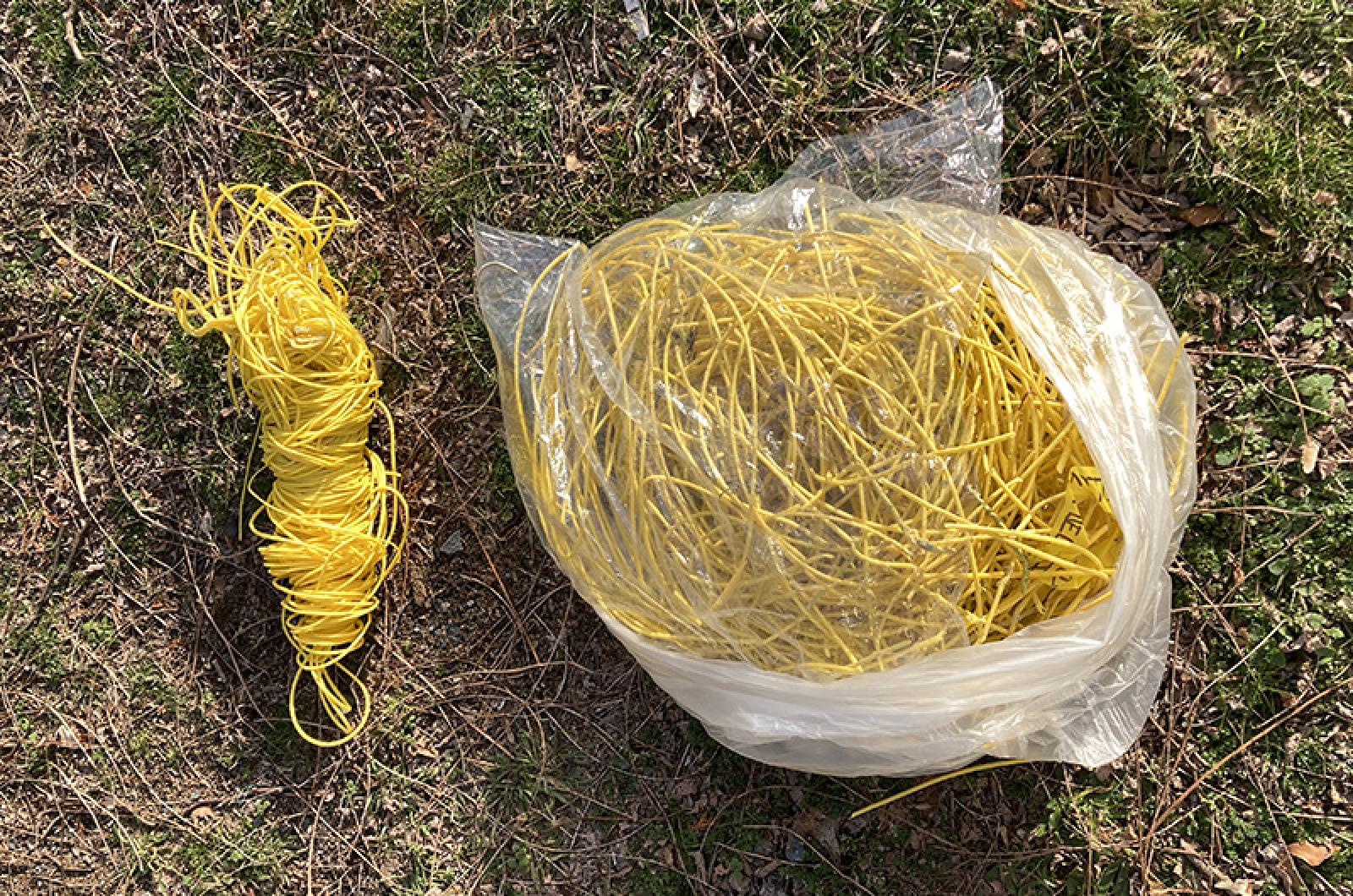Beachcombers, start your engines!
Or at least put your walking shoes on and get out there. Laura Ludwig has a job for you.
Laura is the manager for the Center for Coastal Studies Marine Debris and Plastics Program. Clearly passionate about marine debris, she solved a mystery and sounded the alarm after finding a new type of plastic trash on a local beach. You may not have thought there could be any new kind of junk to be found disposed of in the ocean but, sadly, there is.
Long and short strands of yellow plastic tubing were showing up on Provincetown beaches. Laura’s investigations determined that the material was shock tubing and had originated from work done in Boston, specifically for the Boston Harbor Dredge Project.
The tubing was employed during rock blasting work and served to transmit a signal to explosives needed to break up rocks in the harbor channel to deepen it for larger ships. The material is not dangerous and contains does not contain volatile components, so is safe to touch and safe to take off of the beach.
According to the United States Army Corps of Engineers (USACE), who managed the dredge project, “This shock-tubing is used during rock blasting solely for transmission of an explosive charge, is inert, and contains no explosive materials. Though the contractor was attentive to clean-ups of this tubing after each blast, the deep channel conditions, and frequent flow of vessel traffic in and out of the harbor, unfortunately made it impossible to account for all the used shock tubing,”
While the plastic is safe for you to handle, being made of low-density polyethylene (the same materials as the thin-film grocery bags banned in many of our communities), it is more than just an eyesore on the beach. Wildlife can ingest the plastic that, as we know, will never go away. It breaks down into smaller and smaller pieces of microplastics that settle or get eaten and can then work its way back up the food chain into the bodies of fish and shellfish that we like to eat, in addition to harming and killing other wildlife that is not on our dinner plates.
The inadvertent release is now being monitored by multiple groups. The Center for Coastal Studies is working to determine the amount of materials that have washed up. To date, they have collected more than 2,000 feet (in pieces ranging from 1 millimeter to 90 feet) of this yellow plastic tubing. The New England Fisheries Science Center in Woods Hole is looking at predictive models to ascertain where the tubing will wash ashore. The tubing has been collected across the state’s shorelines and beyond, having been discovered in Truro, Wellfleet, Orleans, Brewster, Yarmouth, Hull, Scituate and as far south as Newport.
Cleanups are now all of our responsibility, though the USACE has been in communication with the contractor who is assisting clean-up efforts. If you find any of this material on Island (or other) beaches, please contact Laura Ludwig at lludwig@coastalstudies.org and Todd Randall of the USACE at 978-318-8518 or todd.a.randall@usace.army.mil.
And while it might be easy to blame industry, government, or careless contractors for this and other types of marine pollution, remind yourself of why the blasting took place. The channel was enlarged to bring in bigger ships to bring us more materials and products for our use and consumption. Do your part to help remove trash from the beach and also consider reduction at the source.
Surprising to me (as I don’t usually quote the Pope), the words of John Paul II provide an appropriate suggestion for all of us: “Modern society will find no solution to the ecological problem unless it takes a serious look at its lifestyle.”
Suzan Bellincampi is islands director for Felix Neck Wildlife Sanctuary in Edgartown and the Nantucket Wildlife Sanctuaries. She is also the author of Martha’s Vineyard: A Field Guide to Island Nature and The Nature of Martha’s Vineyard.







Comments
Comment policy »